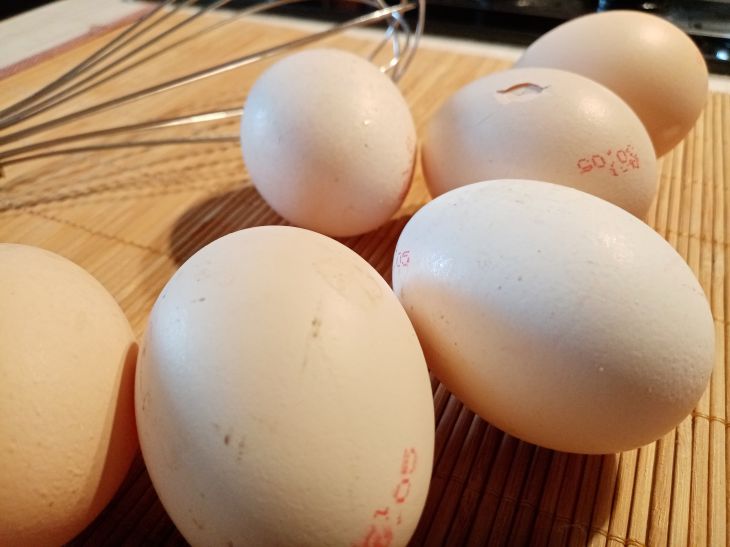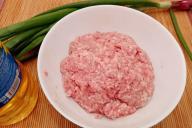One popular cooking method is frying, which results in delicious eggs with crispy edges and a perfectly cooked yolk.
However, getting the perfect fried egg requires some skill and technique.
We will tell you step by step how to fry eggs correctly so that you can enjoy a delicious breakfast or snack. Let's get started, says Arkhipova Yulia .

Why is it important to fry eggs properly?
Frying eggs properly is important for several reasons.
First, it enhances the flavor and texture of the eggs, providing a delicious combination of crispy edges and a soft, golden-brown yolk.
Secondly, it allows you to control the doneness of the eggs according to your preference, whether slightly runny or fully cooked.
Finally, proper frying ensures safety and reduces the risk of foodborne illnesses.
Choosing the Right Eggs
When it comes to frying, choosing the right eggs is very important. Fresh eggs with firm yolks and thick whites are ideal for frying.
Make sure the eggs are not expired and are not cracked. Organic, free-range, or pastured eggs can provide superior flavor and quality, but any fresh egg will do for frying.
Preparing the pan
To get perfectly fried eggs, it is important to properly prepare the pan. To start, choose a non-stick pan or a heavy-bottomed cast iron pan.
Add a small amount of vegetable oil or butter to the pan and distribute it evenly.
Heat the pan over medium-low heat to prevent sticking and ensure even cooking.
Heat control for perfect fried eggs
Controlling the heat during frying is critical to achieving the desired doneness. For fried eggs, it is recommended to maintain medium-low heat.
If you prefer fully cooked eggs without runny yolks, you can use higher heat.
Adjust heat appropriately to avoid burning or undercooking eggs.
Types of Oil for Frying Eggs
When it comes to choosing an oil for frying eggs, choose oils with a high smoke point, such as vegetable oil, canola oil, or avocado oil.
These oils can withstand high heat without smoke or scorch, ensuring even cooking of eggs.
Avoid oils with a low smoke point, such as extra virgin olive oil, as they can impart an unwanted flavor to the eggs.
Technique for making crispy edges and golden yolks
To achieve crispy edges and a soft, golden-brown yolk, there are several techniques you can use.
One method is to add a small spoonful of butter to the pan just before breaking the eggs.
When the butter melts and sizzles, a delicious golden crust forms on the edges of the eggs.
Another option is to brush the eggs with hot oil as they cook. Simply tilt the pan and spoon a spoonful of hot oil over the eggs to crisp up the edges and keep the yolks soft and creamy.
Seasonings and flavorings
While fried eggs are delicious on their own, adding seasonings and flavors can take them to the next level.
Sprinkle your eggs with a pinch of salt and pepper while they cook to enhance their natural flavor. You can also experiment with different herbs and spices, such as paprika, chives, or thyme, to add a touch of sophistication.
To enhance the flavor, you can add grated cheese or a few drops of hot sauce.
Adding Ingredients and Variations
Fried eggs are a versatile base for adding different ingredients and creating delicious variations.
You can enhance the flavor and texture of your eggs by adding ingredients such as sautéed vegetables, diced ham or bacon, or even cooked mushrooms.
Get creative and explore different combinations to suit your taste buds.
From a classic sandwich with a fried egg and crispy bacon to a Mediterranean-style dish with tomatoes and feta cheese, the possibilities are endless.
To flip or not to flip
The decision to flip or leave fried eggs yolk-side up depends on your personal preference and desired level of doneness.
If you prefer runny yolks, it's best not to flip them. Just cover the pan with a lid while cooking to allow the steam to lightly brown the tops of the eggs.
If you like fully cooked yolks, then carefully turn the eggs over with a spatula so that they are evenly fried on both sides.
Removing eggs from the pan
When the eggs are cooked to your liking, it's time to remove them from the pan. Slide a spatula under the eggs, trying to support them on both sides, and carefully remove them from the pan.
Place the eggs on a paper towel-lined plate to absorb excess oil. Be careful not to break the yolks when transferring the eggs.
Serving and presentation
Decorating fried eggs can add a special touch to the dish. Transfer the fried eggs to a clean plate or serving dish.
You can arrange them next to each other or slightly overlap each other to create an attractive visual effect. Sprinkle fresh herbs, such as parsley or dill, on top to give them a bright color. Serve the eggs with toast, crispy bacon, or a fresh salad to complete the dish.
Solving common problems
Frying eggs can sometimes be a tricky task, but with a little practice you can overcome common problems.
Here are some tips to help you troubleshoot:
- If eggs are sticking to the pan, make sure it is well greased and preheated.
- To avoid overcooking the eggs, monitor the temperature and adjust it as needed.
- If the yolks break when turning, be careful and use a wide spatula for better control.
- If your eggs are too greasy, use less oil or butter in the pan.
- If the eggs are undercooked, increase the cooking time slightly or cover the pan with a lid to retain more heat.
Conclusion
Once you master the art of frying eggs correctly, you can enjoy a delicious and versatile dish that you can prepare to your liking.
By following the steps outlined in this article, you will achieve crispy edges, a perfectly fried yolk, and a riot of flavor in every bite. So go ahead, test your frying skills, and enjoy the pleasure of perfectly fried eggs!
Previously we talked about how to make lazy pies in no time.









